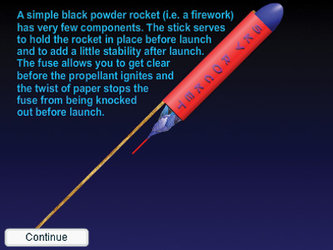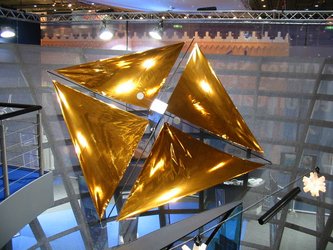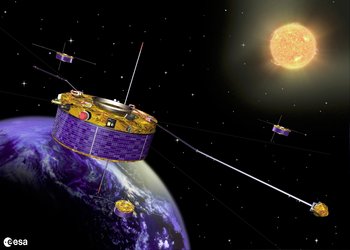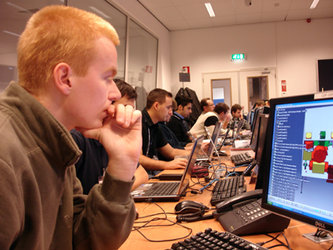Solid and liquid fuel rockets
This changed when the American rocket pioneer, Robert Goddard applied an idea used in a steam turbine to the rocket motor. This is the one bit of science in this article that is beyond pre-university physics but the 'pinch' in the nozzle (usually called the 'throat') causes the exhaust gases to accelerate up to the local speed of sound in the gas. Once it is through the throat, but still inside the nozzle, the pressure and the temperature drop rapidly allowing much more of the energy of the exhaust gas to be extracted. The easiest way to think of this is as follows:
- The rocket works by throwing mass out of the back. The faster the mass is ejected the more thrust is generated.
- Inside the combustion chamber the pressure and temperature are very high.
- If the gas is allowed to expand it takes up more space and so it must accelerate in order to make sufficient space. As it does this it also cools.
- Once it is clear of the rocket it doesn't matter what the temperature or the pressure of the exhaust gas is, it won't help accelerate the rocket.
- The nozzle allows the exhaust gas to expand and cool whilst still providing thrust to the rocket.
Animation of De Laval nozzle motor for solid fuel motor:
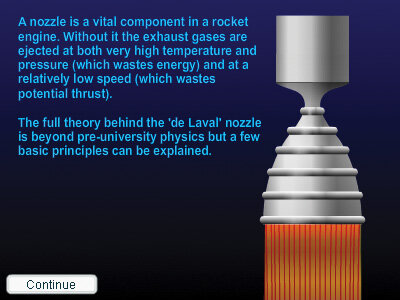
By the time the exhaust gas leaves the nozzle its temperature will be far lower than in the combustion chamber and it will be travelling at ‘hypersonic’ speeds up to about 5 km s-1. It might seem like an odd idea but the pressure of the exhaust at this point might well be lower than atmospheric pressure!




